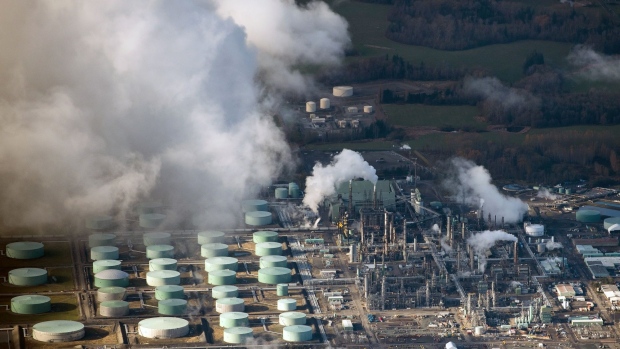Jan 19, 2022
Oil Markets May Be Even Tighter Than Forecasters Say
, Bloomberg News

(Bloomberg) -- The oil market is getting tighter and there may be even less slack in the system than forecasts suggest.
The latest outlooks from the International Energy Agency and the U.S. Energy Information Administration show the world needing more oil this year from the members of the Organization of Petroleum Exporting Countries than they did a month ago. The bigger worry is the growing mismatch between the level of oil stockpiles they can measure and the volumes their models predict.
Stockpiles are one of the oil market's safety valves, alongside spare production capacity, for dealing with unexpected outages or soaring demand. With spare capacity among OPEC+ producers heading toward multi-year lows, any suggestion that oil stockpiles are lower than previously thought could put an even bigger fire under oil prices that have already climbed to a seven-year high.
Some of the oil that can’t be seen may be in storage that is neither visible, nor reported — caverns that form part of China’s strategic stockpile, for example. But that doesn’t account for everything. Demand estimates may be too low, production numbers too high, or some combination of the two.
The demand numbers are already looking stronger than they did a month ago with the omicron variant of the Covid-19 virus landing a smaller blow to consumption than many had feared. The IEA has increased its demand forecast for 2022 by almost 200,000 barrels a day and made a similar upward revision to its estimate for 2021 as well. The EIA also sees this year’s oil demand stronger than it did a month ago, but OPEC’s own analysts, who are often slower to revise their forecasts, have left their overall demand outlook for 2022 unchanged from December, though they have shifted some growth from the third to the fourth quarter. They have done the same for 2021.
While they see stronger demand, the IEA and EIA are less upbeat on supply. Both have cut their forecasts for 2022 of all non-OPEC oil production since December. And in both cases the biggest downgrades are seen in the current quarter.
The IEA pins the revision on global biofuels production, which it has cut by 200,000 barrels a day this quarter from its previous forecast. Elsewhere, it sees lower than previously expected Russian production offset by higher U.S. output. The U.S.-based EIA made downward revisions to its forecasts for domestic production, as well as supplies from Brazil and Ecuador. A downward revision to Russian production was offset by an increase in the forecast for neighboring Kazakhstan.
As with demand, the OPEC analysts have left their supply forecasts essentially unchanged from December.
While the IEA and OPEC still see global oil supply running ahead of demand in the first quarter, even if the OPEC+ group fails to add all the output its rising targets allow, the EIA’s forecast shows a deficit for the first time. It is short-lived, though, with stockbuilds returning in all subsequent quarters. The EIA is alone among the three agencies in forecasting OPEC crude production.For the IEA and OPEC, we can see how much OPEC countries need to produce to keep supply and demand balanced. According to the IEA, the answer is little more than they pumped last month. OPEC, in contrast, sees the need to open the taps, particularly in the second half of the year.
Why, then, are oil prices soaring? The answer may, at least in part, lie in the re-emergence of the age-old issue of “missing barrels.” That’s the term used to describe the difference between observed, or reported, inventories and those implied by the balance between estimated global supply and demand. It is a concern because most of those barrels are not truly missing; they may have been consumed already, or never produced.The IEA bemoans “a growing discrepancy between observed and calculated stock changes” and notes that estimates of recent levels of demand and stockpiles that it receives have become less consistent.
The pandemic has made use of high frequency indicators imperative, it notes, but relating those to historical demand numbers has proved difficult. So too has generating forecasts that have required assumptions beyond the usual GDP and price inputs to account for lockdowns, travel restrictions, working from home and other pandemic-induced changes to behavior.
That adds weight to the IEA’s concern that historical demand may have been underestimated and that inventory levels implied by the imbalance between supply and demand may prove illusory.
The IEA’s balances imply that global oil stockpiles were still 660 million barrels above pre-pandemic levels at the end of last year. But those reported in the developed economies of the OECD nations were almost 220 million barrels below where they were two years earlier.
The oil market is reacting to the inventory levels it can see, as well as robust demand and dwindling OPEC+ spare production capacity. The IEA is starting to raise concerns that it’s right to do so.
©2022 Bloomberg L.P.


